Experts Say These Are *The* Best Plant-Based Protein Sources
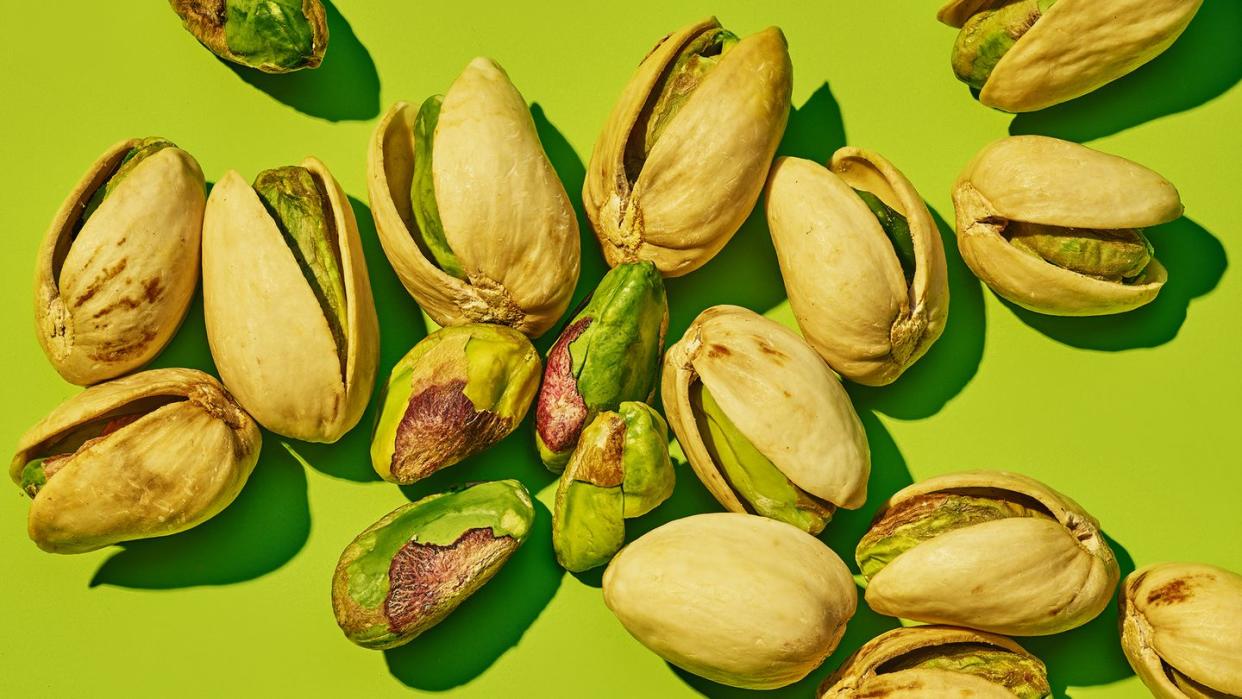
When it comes to the protein publicity machine, chicken, beef, and pork tend to hog (no pun intended!) the limelight. And it's easy to see why: Not only do animal products provide all nine essential amino acids (more on that in a bit), but their protein counts, gram for gram, are pretty hard to beat (one T-bone steak boasts a jaw-dropping 98 grams of protein!). No wonder steers walk around with all that main-character energy!
All that said, the long-time supporting player, plant-based protein, is certainly no slouch. And, in fact, is really starting to come into its own. Industry experts project that the plant-based protein market could account for nearly 8 percent of the global protein market by 2030 (from a value of nearly $30 billion in 2020 up to $162 billion), thanks to the growing number of options and the ease with which consumers can find plant-based products at stores and restaurants.
Even if you're not vegan or vegetarian, there are a number of reasons to embrace plant-based protein as part of your diet.
Meet the experts: Kelly Jones, RD, is board certified in sports dietetics and the founder of Kelly Jones Nutrition. Kristen Smith, RD, is a national spokesperson for the Academy of Nutrition and Dietetics.
What are the benefits of plant-based protein?
There are a number of pros to occasionally swapping in a plant-based protein (hello, tofu!) for an animal-based protein (ta-ta for now, pork tenderloin!). The first is all about your health—both in what you're losing and what you're gaining, says Kelly Jones, RD, founder of Kelly Jones Nutrition.
"Reducing the amount of meat you're using lowers your intake of saturated fats, which we know are associated with higher risk of heart disease, especially in women," Jones says.
By taking the additional step of subbing in a plant-based protein, you're also gaining nutrients you otherwise wouldn't have gotten from a meat product.
"Overwhelming amounts of research show that the more variety you get from whole plant foods in your diet, the more antioxidants you get," Jones says. "The other thing that they're providing is a little bit more fiber, which is really satiating, and the different types of carbohydrates you're getting from that can actually support the gut microbiome, which we know is also incredibly important."
Plant-based sources of protein aren't just beneficial for your personal health but also for the health of the planet, says Kristen Smith, RD, a national spokesperson for the Academy of Nutrition and Dietetics.
"Studies routinely indicate that plant-based diets are better for the environment," she says. "One of the larger benefits of plant-based diets that's often highlighted is the ability to reduce greenhouse gas emissions that are often associated with food production and global land clearing with animal-based protein sources."
How much protein should I eat?
For decades, the recommended daily allowance (RDA) for protein has been set at 0.8 grams per kilogram of weight (or 0.36 grams per pound). However, that is just a baseline, says Smith.
"It's the minimum amount you need to eat daily to stay healthy but doesn't take into account your specific goals or medical conditions," she says.
For instance, if you're someone who exercises multiple times a week and is looking to gain muscle, you may want to aim for 1.2 g/kg or slightly above, says Jones. (A registered dietician or nutritionist can help you figure out the optimal levels for your lifestyle and goals.)
In addition to the amount of protein you consume, you'll want to be mindful about the mix of protein. While animal sources provide all nine of the essential amino acids (the building blocks of protein that our bodies don't make naturally), plant-based sources require some mixing and matching to get the necessary levels of those AAs.
"All plant-based foods contain at least some of every essential amino acid," Smith says. "When a variety of plant-based proteins are consumed throughout the day, it is possible to consume adequate essential amino acids."
That's especially true when you lean into foods that are a complete protein (i.e. have adequate levels of all essential amino acids) on their own, such as soy products like tofu, edamame, soy milk, and tempeh. But, once again, variety is key. Sampling the cornucopia of plant-based protein options, from chickpeas to quinoa, will load you up on a host of nutrients. Here are 10 of the best plant-based proteins to get on your plate:
1. Lentils
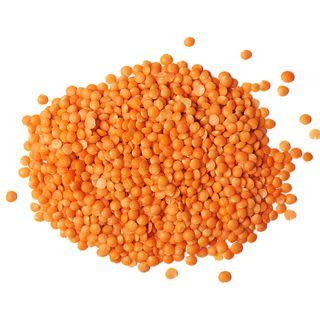
This little legume not only packs a protein punch, but is also an all-around nutritional heavy-hitter, says Smith: "Lentils are rich in fiber, vitamins, minerals, and bio-nutrients." They’re also incredibly versatile, either as a topper, side dish, or main. "I love adding them to salads or soups, and they're also great to make homemade vegetable burgers," Smith says.
Per 1/2-cup serving, cooked: 9 g protein
2. Pistachios
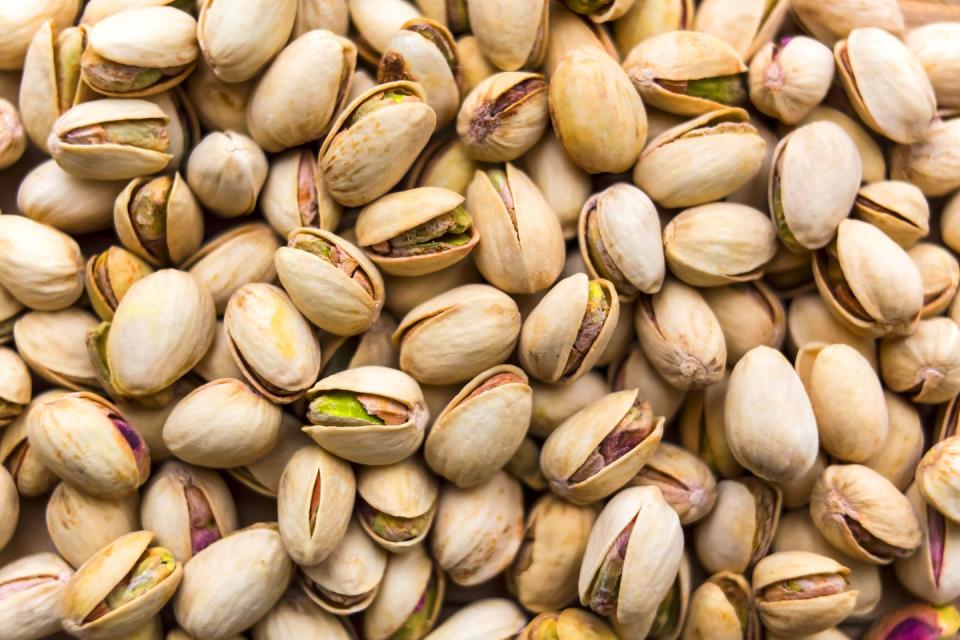
"Amino acid profile should be considered when choosing plant proteins, so I love recommending pistachios, as they offer 6 grams of complete plant protein per serving," Jones says. She adds that the in-shell varieties—with all that cracking and peeling required to get to the nutty goodness inside—foster a more mindful, satiating snack experience.
Per 1/2-cup serving: 12.5 g protein
3. Quinoa
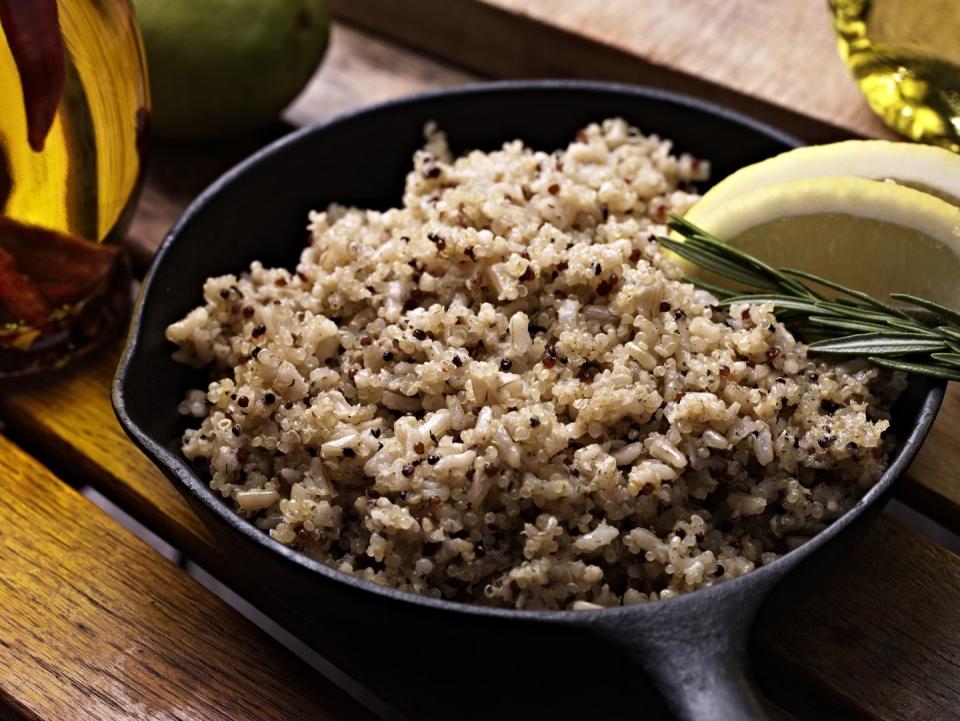
Though technically a seed, quinoa is typically grouped with grains and is one of the best sources of protein in that category (apologies, white rice!). "I like to prep a big batch of quinoa ahead of the week to add to salads and make grain bowls at lunch, and to use in various dinners such as stuffed peppers," says Jones. She suggests pairing quinoa with a legume to ensure your meal meets your protein goals.
Per 1/2-cup serving, cooked: 4 g protein
4. Chickpeas
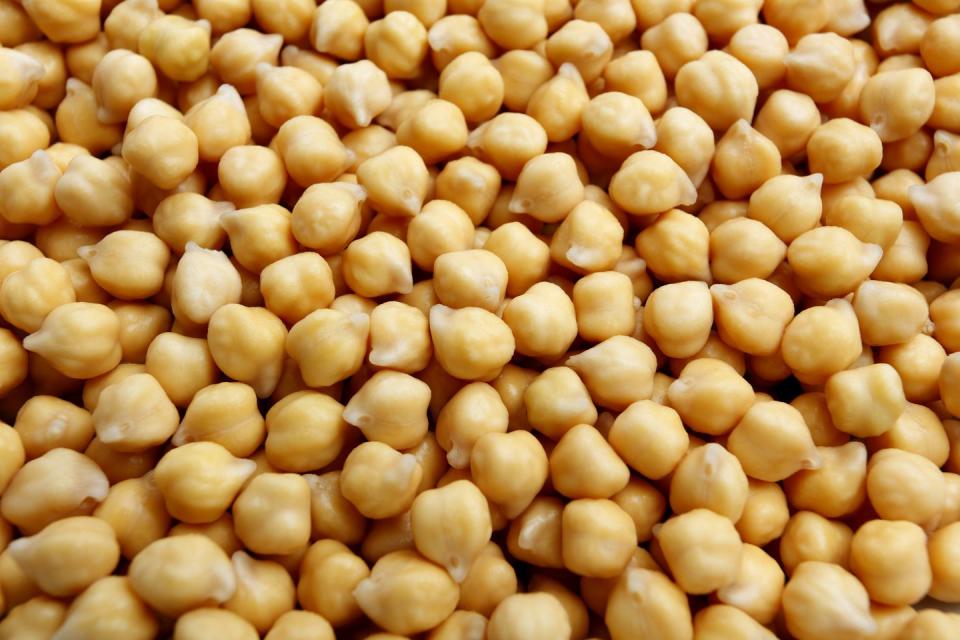
Whether roasted for a munchable snack or blended into a creamy hummus spread, chickpeas (aka garbanzo beans) are another legume that gets top scores from the experts. "Chickpeas are rich in protein, folate, fiber, iron, phosphorus, and healthy fatty acids," says Smith. And they're not just for lunch and dinner! Amp up your breakfast protein with our recipe for Savory Yogurt with Avocado and Chickpea Granola.
Per 1/2-cup serving, raw: 20 grams of protein
5. Hemp hearts
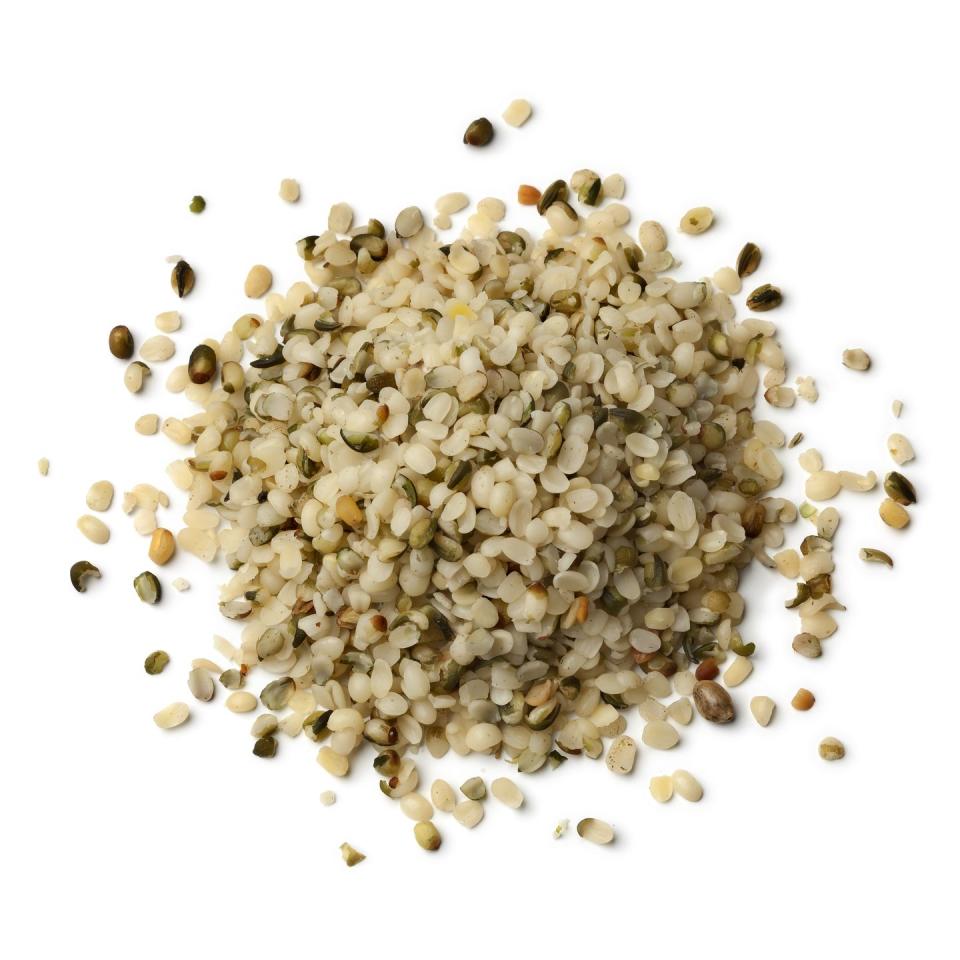
Never thrown a bag of hemp seeds into your grocery cart? Now might be the time to start, says Jones, as they're a great source of protein. "Hemp hearts are shelled hemp seeds and offer 10 grams of protein per serving," she explains. "While you may not always include a full serving, I often recommend hemp hearts as a protein 'booster' for meals and snacks." Consider sprinkling a tablespoon on top of oatmeal, toast, soup, or salad. "I also love that they're a good source of iron and offer fiber," Jones adds.
Per 3-tbsp serving: 9 g protein
6. Tofu
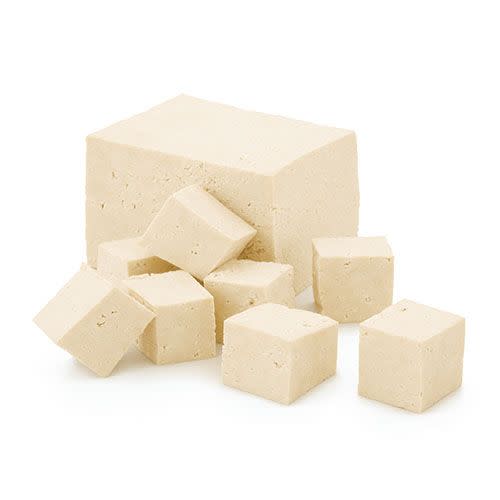
Typically used as a meat substitute in its firm state or as an egg or dairy substitute in its silken form, tofu is made by coagulating soy milk and pressing the resulting curds into a block. But don't let that oh-so-appealing description deter you from enjoying its muscle-building benefits. "Soy is an important one because it contains all nine essential amino acids, making it a complete protein," Smith says.
Per 3-oz. serving, firm: 9 g protein
7. Roasted edamame
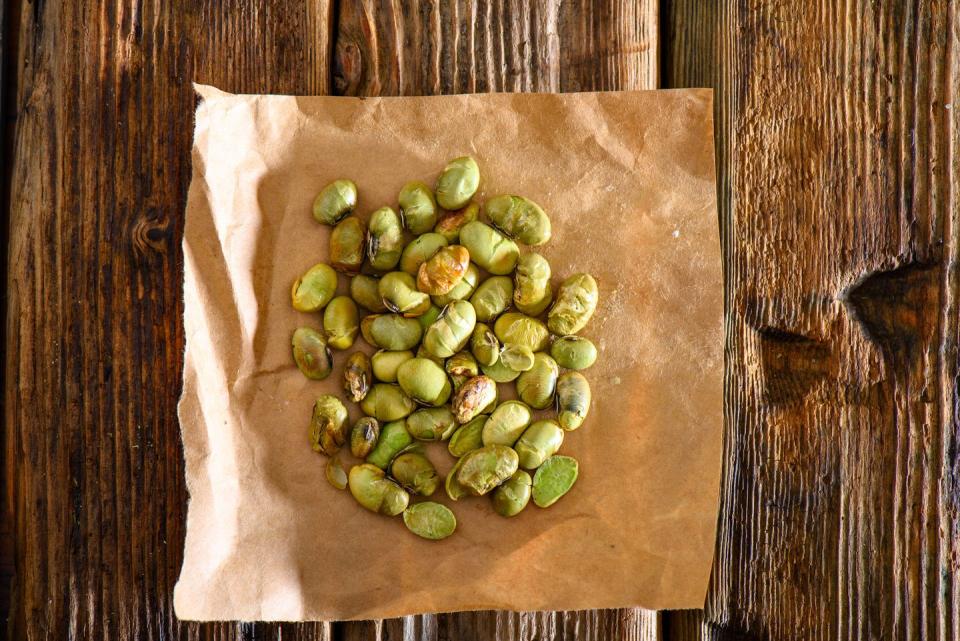
If you want all the benefits of soy but in a package that's a little easier to, say, throw into a gym bag for a post-workout snack, Jones recommends pre-cooked soy beans. "While regular edamame is also a good source of protein, roasted edamame [in a single serve packet] is perfect for busy on-the-go lives and snacking from anywhere with 14 grams per 1/3 cup serving."
Per 45 g pack: 20 g protein
8. Peanut butter
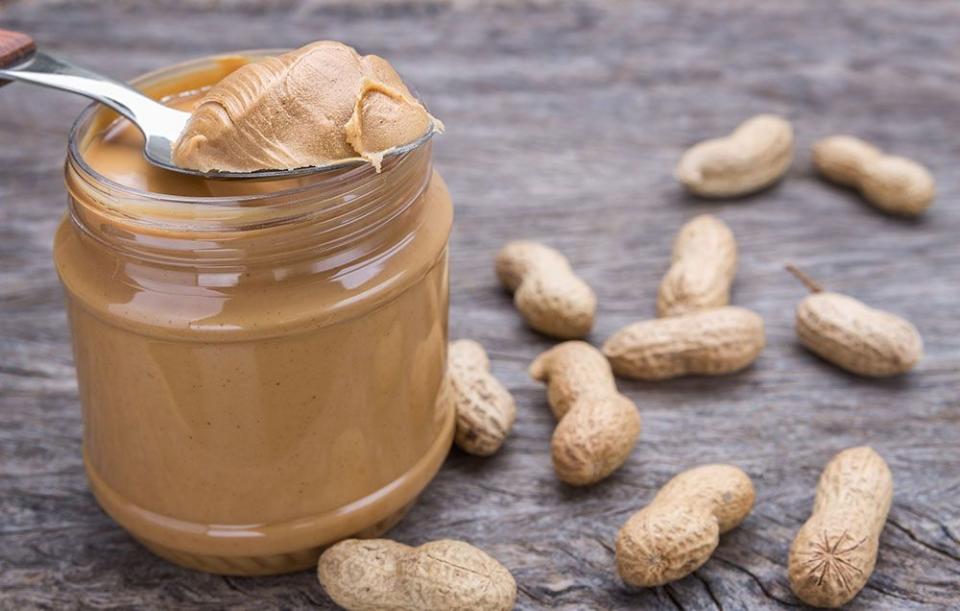
Yes, this list wouldn't be complete without everyone's favorite pantry staple (and jelly's BFF). "You'll get about seven grams of protein from two tablespoons of peanut butter," Smith says, adding, "You do want to keep the portion sizes in check as peanut butter is one of the more calorie dense plant-based protein options." And if you're wondering whether there's a difference, protein-wise, between smooth and crunchy, the answer is: not really!
Per 100 g serving, creamy: 24 g protein
9. Fava beans
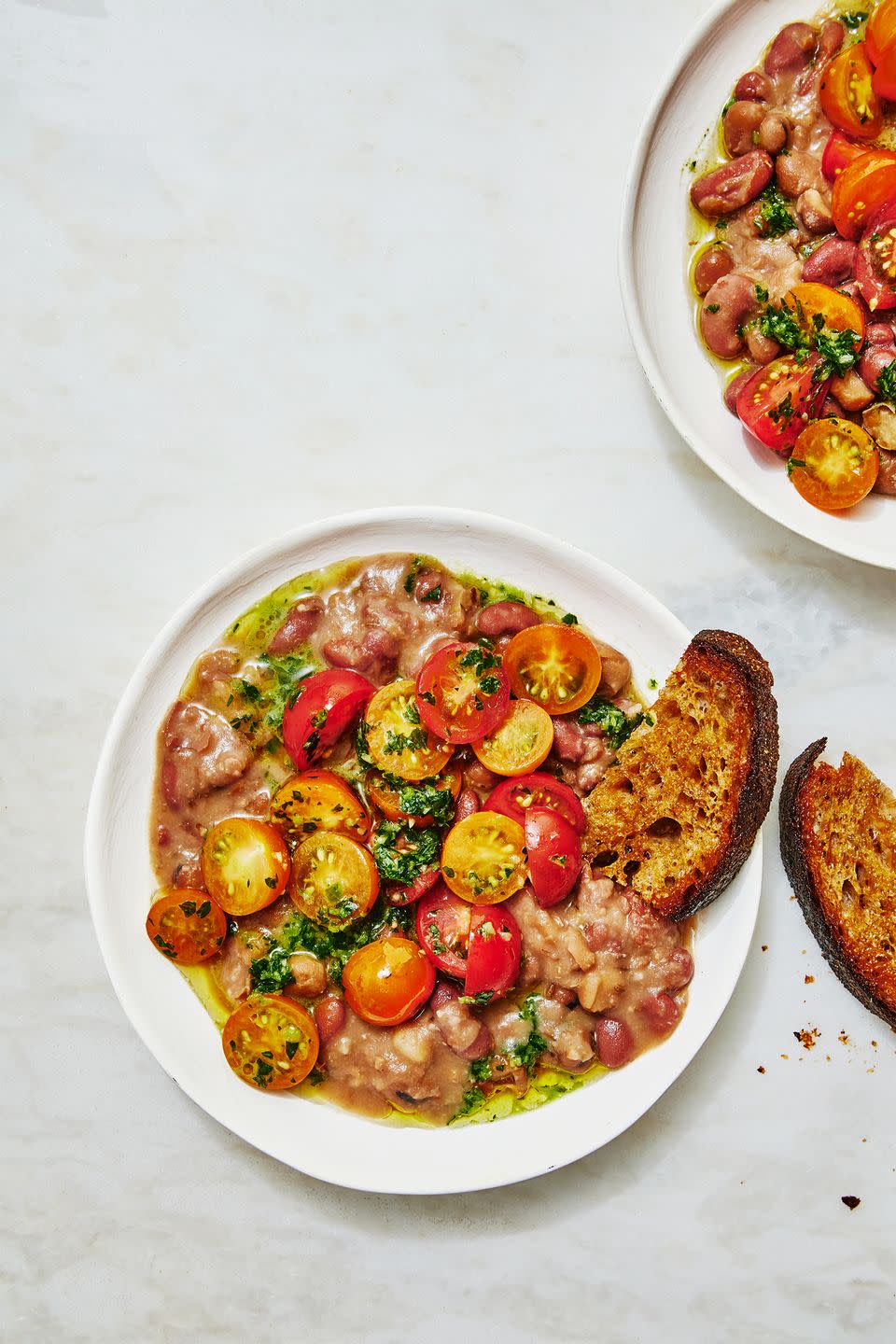
"Fava beans are some of the highest protein beans that also offer potassium and fiber," Jones says. Much like edamame, she likes these roasted, either paired with fruit as a snack or to add some crunch to a salad. However, if you'd rather eat them cooked, incorporate the beans into your breakfast with our Medames Style Fava Beans With Toast recipe (pictured).
Per 1-cup serving, cooked: 13 g protein
10. Peas
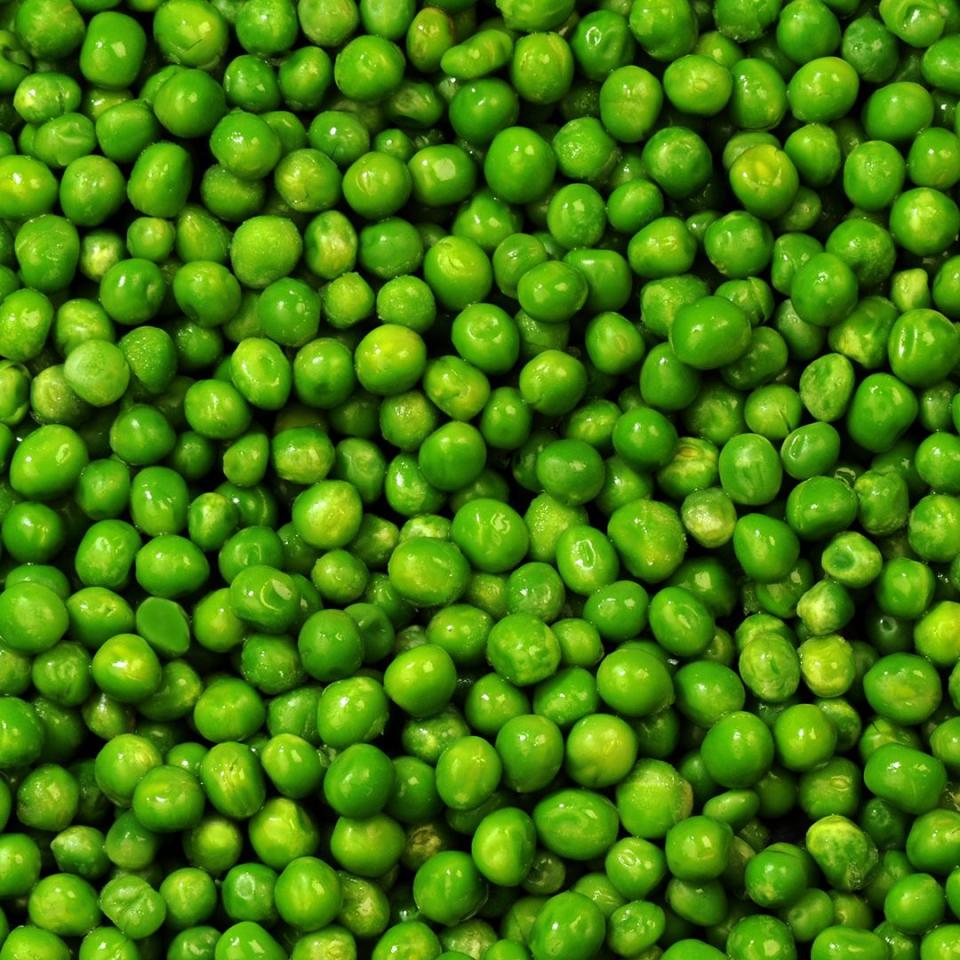
There's nothing pea-sized about the amount of nutrients in these green globes. One cup of peas not only provides eight grams of protein, but plenty of fiber and vitamin C too. FYI: Pea protein powder has recently become a popular addition to smoothies and shakes, and it's no wonder: One 22 gram packet boasts nearly 20 grams of protein. As mom always said, "Don't forget to drink your peas..."
Per 1-cup serving, raw: 8 g protein
When it comes to the protein publicity machine, chicken, beef, and pork tend to hog (no pun intended!) the limelight. And it's easy to see why: Not only do animal products provide all nine essential amino acids, but their protein counts, gram for gram, are pretty hard to beat (one T-bone steak boasts a jaw-dropping 98 grams of protein!). It's no wonder that steers walk around with all that main-character energy.
Jokes aside, the long-time supporting player, plant-based protein, is certainly no slouch. And, in fact, is really starting to come into its own. Industry experts project that the plant-based protein market could account for nearly 8 percent of the global protein market by 2030 (from a value of nearly $30 billion in 2020 up to $162 billion), thanks to the growing number of options and the ease with which consumers can find plant-based products at stores and restaurants. And even if you're not vegan or vegetarian, there are a number of reasons to embrace plant-based protein as part of your diet.
What are the benefits of plant-based protein?
There are a number of pros to occasionally swapping in a plant-based protein (hello, tofu!) for an animal-based protein (ta-ta for now, pork tenderloin!). The first is all about your health—both in what you're losing and what you're gaining, says Kelly Jones, RD, founder of Kelly Jones Nutrition."Reducing the amount of meat you're using lowers your intake of saturated fats, which we know are associated with higher risk of heart disease, especially in women," Jones says.
Meet the experts: Kelly Jones, RD, is board certified in sports dietetics and the founder of Kelly Jones Nutrition. Kristen Smith, RD, is a national spokesperson for the Academy of Nutrition and Dietetics.
By taking the additional step of subbing in a plant-based protein, you're also gaining nutrients you otherwise wouldn't get from a meat product. "Overwhelming amounts of research show that the more variety you get from whole plant foods in your diet, the more antioxidants you get," Jones says. "The other thing that they're providing is a little bit more fiber, which is really satiating, and the different types of carbohydrates you're getting from that can actually support the gut microbiome, which we know is also incredibly important."
What is the best way to incorporate plant-based protein into a diet?
Be mindful about the mix with plant-based sources. While animal sources provide all nine of the essential amino acids (the building blocks of protein that our bodies don't make naturally), plant-based ones require some mixing and matching to get the necessary levels of those AAs.
"All plant-based foods contain at least some of every essential amino acid," says Kristen Smith, RD, a national spokesperson for the Academy of Nutrition and Dietetics. "When a variety of plant-based proteins are consumed throughout the day, it is possible to consume adequate essential amino acids."
That's especially true when you lean into foods that are a complete protein (i.e. have adequate levels of all essential amino acids) on their own, such as soy products like tofu, edamame, soy milk, and tempeh. But, again, variety is key. Sampling the cornucopia of plant-based protein options, from chickpeas to quinoa, will load you up on a host of nutrients.
WH consulted nutrition experts to find the 10 best plant-based proteins to get on your plate:
Lentils
This little legume not only packs a protein punch, but is also an all-around nutritional heavy-hitter, says Smith."Lentils are rich in fiber, vitamins, minerals, and bio-nutrients." They’re also incredibly versatile, either as a topper, side dish, or main. "I love adding them to salads or soups, and they're also great to make homemade vegetable burgers," Smith says.
Per 1/2-cup serving, cooked: 9 g protein
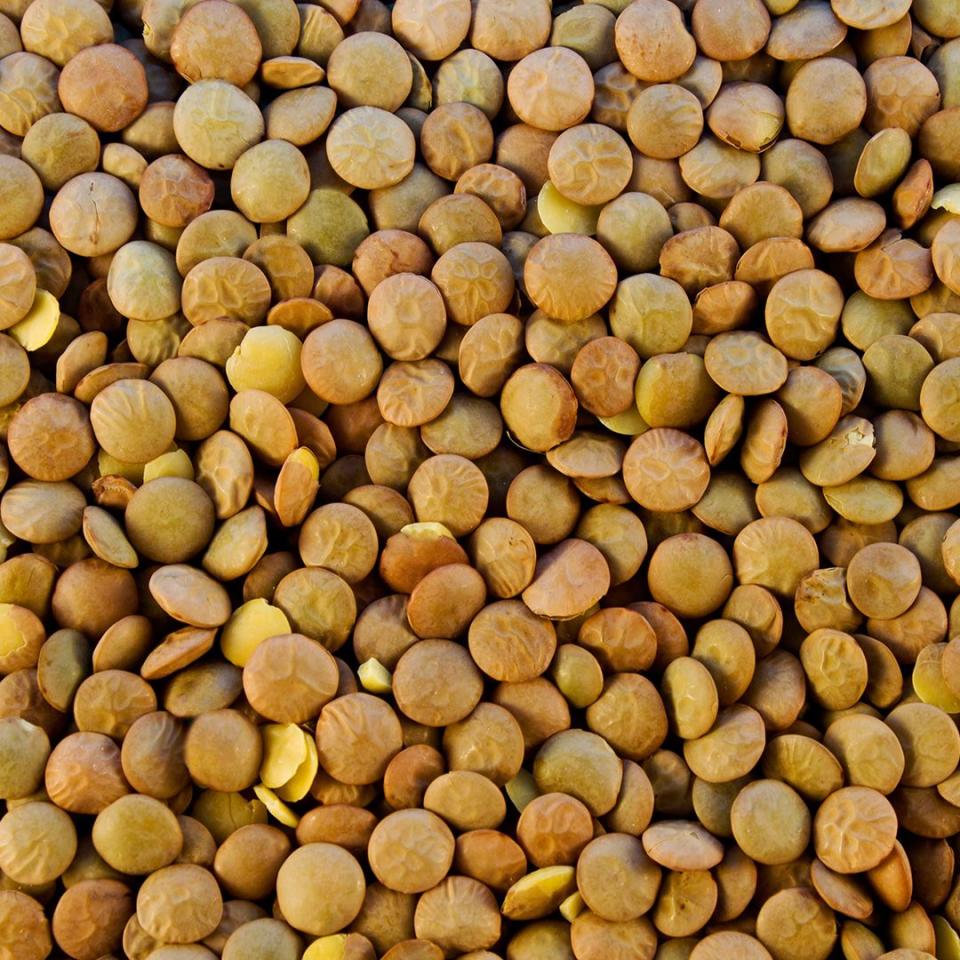
Pistachios
"Amino acid profile should be considered when choosing plant proteins, so I love recommending pistachios, as they offer 6 grams of complete plant protein per serving," Jones says. She adds that the in-shell varieties—with all that cracking and peeling required to get to the nutty goodness inside—foster a more mindful, satiating snack experience.
Per 1 ounce serving: 6 grams of protein

Quinoa
Though technically a seed, quinoa is typically grouped with grains and is one of the best sources of protein in that category (apologies, white rice!). "I like to prep a big batch of quinoa ahead of the week to add to salads and make grain bowls at lunch, and to use in various dinners such as stuffed peppers," says Jones. She suggests pairing quinoa with a legume to ensure your meal meets your protein goals.
Per 1/2-cup serving, cooked: 4 g protein
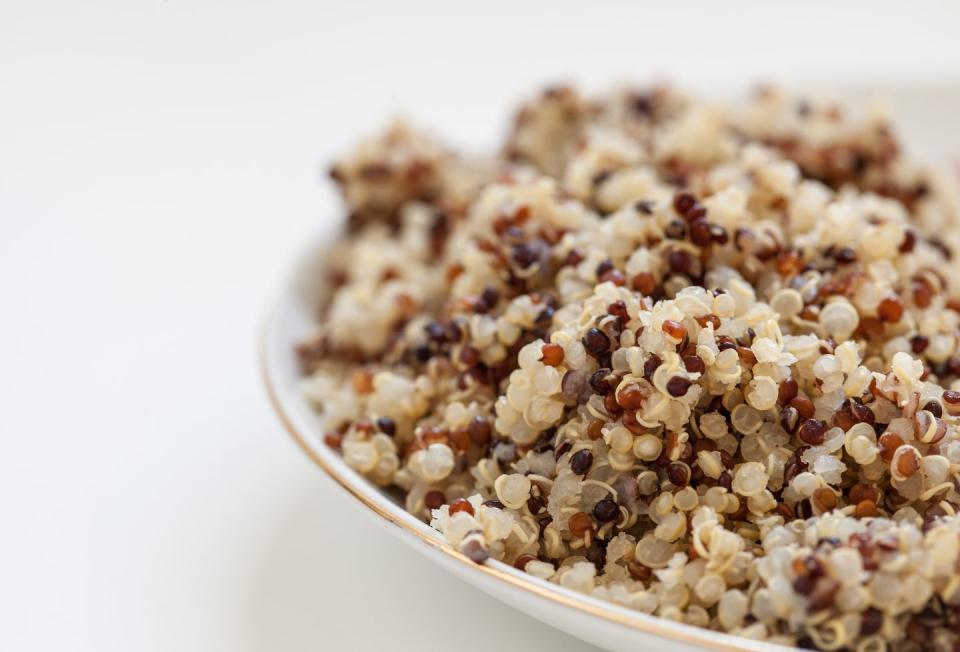
Chickpeas
Whether roasted for a munchable snack or blended into a creamy hummus spread, chickpeas (aka garbanzo beans) are another legume that gets top scores from the experts. "Chickpeas are rich in protein, folate, fiber, iron, phosphorus, and healthy fatty acids," says Smith. And they're not just for lunch and dinner! You can amp up your breakfast protein with our recipe for Savory Yogurt with Avocado and Chickpea Granola.
Per 1/2 cup serving, cooked: 7 grams of protein
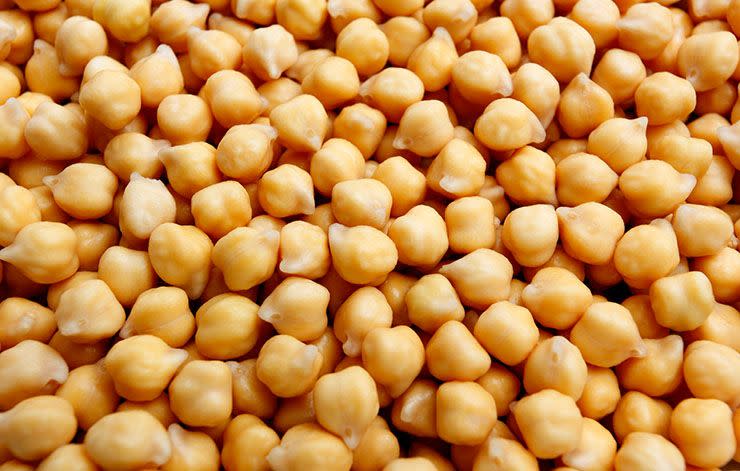
Hemp Seeds
Never thrown a bag of hemp seeds into your grocery cart? Now might be the time to start, says Jones, as they're a great source of protein. "Hemp hearts are shelled hemp seeds and offer 10 grams of protein per serving," she explains. "While you may not always include a full serving, I often recommend hemp hearts as a protein 'booster' for meals and snacks." Consider sprinkling a tablespoon on top of oatmeal, toast, soup, or salad. "I also love that they're a good source of iron and offer fiber," Jones adds.
Per 3-tbsp serving: 9 g protein

Tofu
Typically used as a meat substitute in its firm state or as an egg or dairy substitute in its silken form, tofu is made by coagulating soy milk and pressing the resulting curds into a block. But don't let that oh-so-appealing description deter you from enjoying its muscle-building benefits. "Soy is an important one because it contains all nine essential amino acids, making it a complete protein," Smith says.
Per 3-oz. serving, firm: 9 g protein

Roasted Edamame
If you want all the benefits of soy but in a package that's a little easier to, say, throw into a gym bag for a post-workout snack, Jones recommends pre-cooked soy beans. "While regular edamame is also a good source of protein, roasted edamame [in a single serve packet] is perfect for busy on-the-go lives and snacking from anywhere with 14 grams per 1/3 cup serving."
Per 45 g pack: 20 g protein
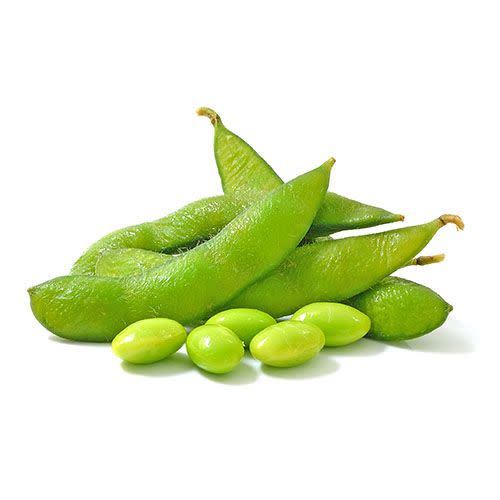
Peanut Butter
Yes, this list wouldn't be complete without everyone's favorite pantry staple (and jelly's BFF). "You'll get about seven grams of protein from two tablespoons of peanut butter," Smith says, adding, "You do want to keep the portion sizes in check as peanut butter is one of the more calorie dense plant-based protein options."
And if you're wondering whether there's a difference, protein-wise, between smooth and crunchy, the answer is: not really!
Per 2 Tbsp serving: 7.1 grams of protein
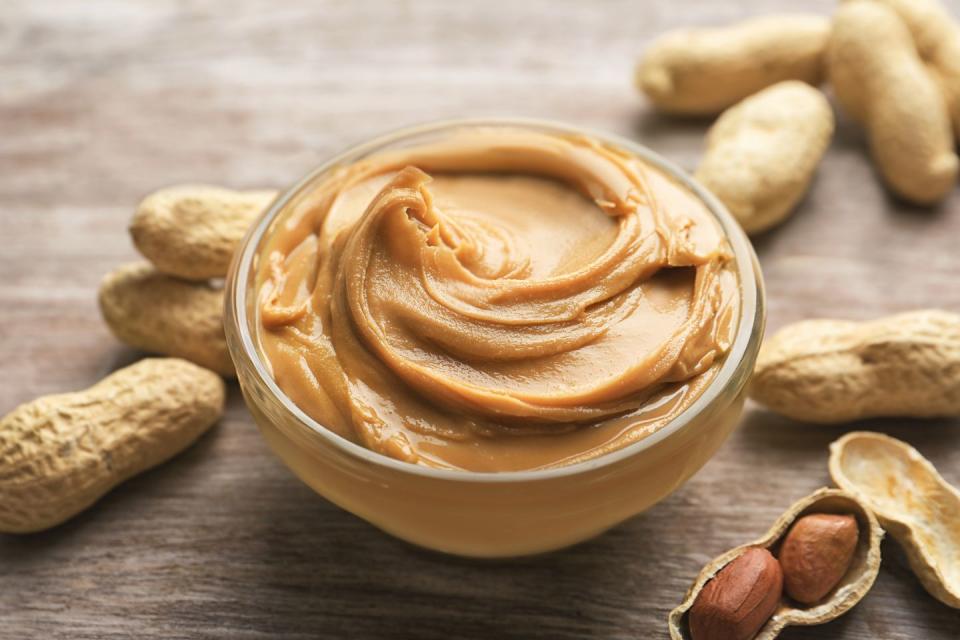
Fava Beans
"Fava beans are some of the highest protein beans that also offer potassium and fiber," Jones says. Much like edamame, she likes these roasted, either paired with fruit as a snack or to add some crunch to a salad. However, if you'd rather eat them cooked, incorporate the beans into your breakfast with our Medames Style Fava Beans With Toast recipe.
Per 1-cup serving, cooked: 13 g protein
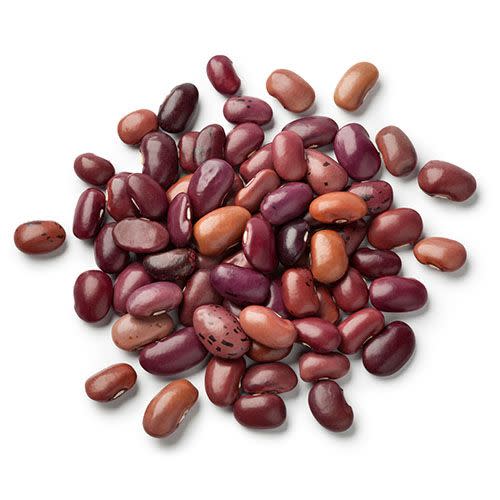
Peas
There's nothing pea-sized about the amount of nutrients in these green globes. One cup of peas not only provides eight grams of protein, but plenty of fiber and vitamin C too.
FYI: Pea protein powder has recently become a popular addition to smoothies and shakes, and it's no wonder: One 22 gram packet boasts nearly 20 grams of protein. As mom always said (or did she?), "Don't forget to drink your peas..."
Per 1-cup serving, raw: 8 g protein

You Might Also Like

